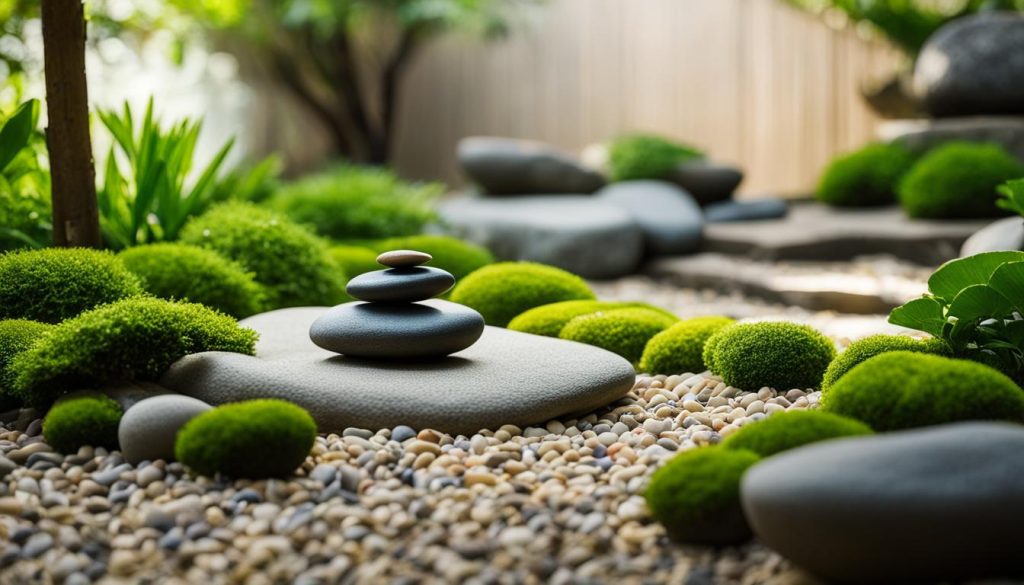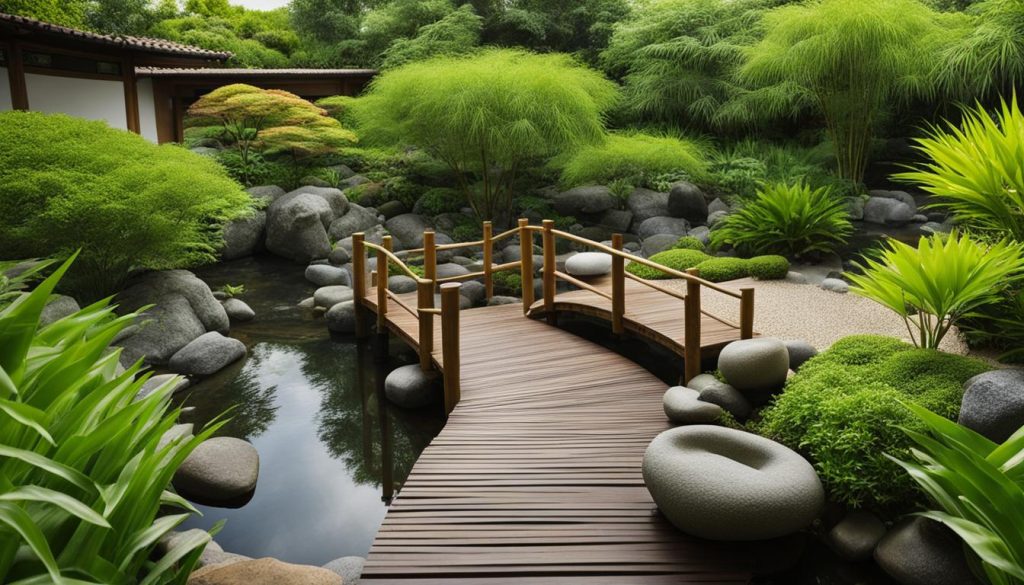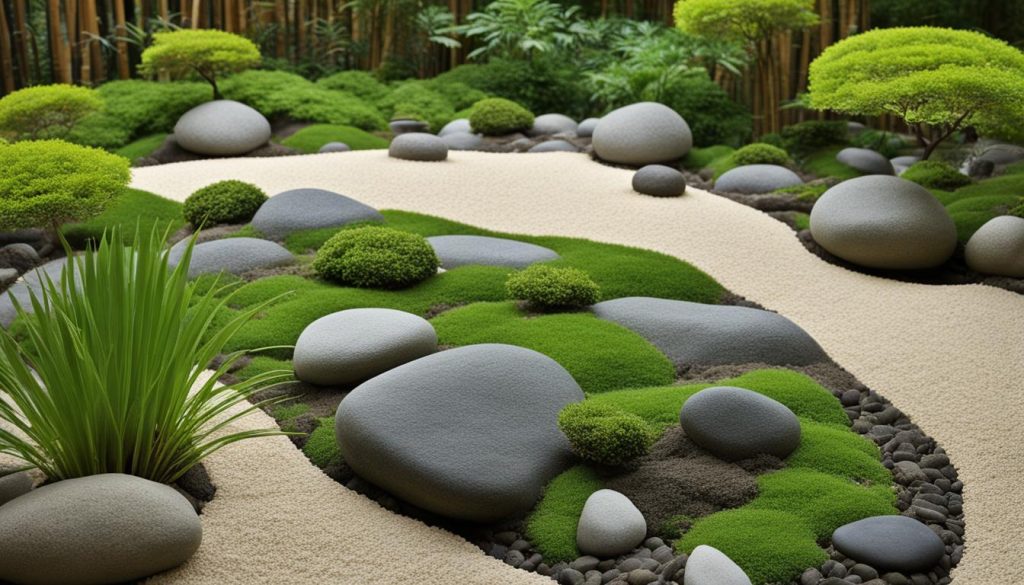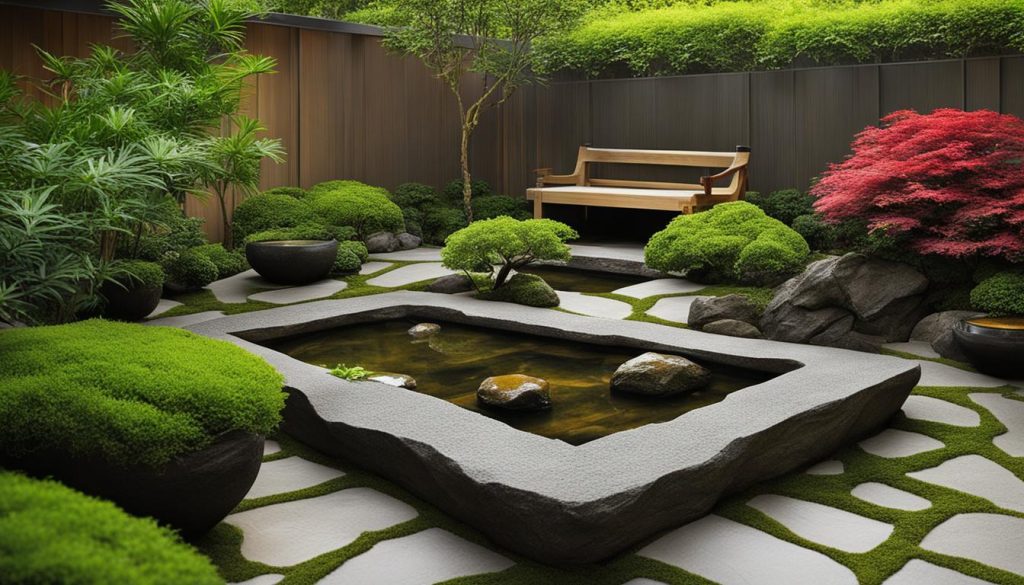Welcome to our article where we will explore the art of Zen garden landscaping. Whether you are looking to create a tranquil oasis in your backyard or simply want to cultivate peace and harmony in your outdoor space, a Zen garden is the perfect solution. Our team of experts will guide you through the key elements and principles of Zen gardens, providing practical tips and inspiration along the way.
A Zen garden is an ideal way to transform your backyard into a serene and calming retreat. The minimalist design and careful use of natural elements make it a perfect space for relaxation and meditation. Join us as we explore the philosophy, design, and maintenance of a Zen garden. By the end of this article, you will have all the information you need to create a beautiful and tranquil oasis backyard that will provide years of enjoyment and peace.
Understanding the Philosophy of Zen Gardens
If you’re looking to create a truly authentic Zen garden, it’s important to understand the philosophy behind it. At its core, Zen Buddhism teaches us to find inner peace and acceptance of the present moment. These teachings are reflected in the design and layout of Zen gardens, which aim to create a sense of tranquility and harmony.
One of the key principles of Zen Buddhism is mindfulness, which involves being fully present in the moment and aware of our surroundings. This is reflected in the minimalist design of Zen gardens, which encourage us to focus on the natural world and appreciate its beauty.
The Concept of Wabi-Sabi
Another important concept in Zen Buddhism is wabi-sabi, which emphasizes the beauty of imperfection and transience. This is reflected in the use of natural elements in Zen gardens, such as weathered rocks and mossy surfaces.
The use of asymmetrical balance is also common in Zen garden design, as it reflects the idea that true beauty is not found in perfect symmetry but in the imperfections and variations of the natural world.

Incorporating these principles into your own Zen garden can help you create a space that promotes relaxation and inner peace. By focusing on the beauty of imperfection and being mindful of the present moment, you can cultivate a sense of calm and balance in your backyard.
Designing Your Zen Garden
Designing a Zen garden involves more than just arranging a few rocks and plants. It requires careful thought and planning to create a space that promotes a sense of peace and tranquility. Here are some essential steps to help you design your Zen garden:
- Choose the right location: Select an area in your yard that is sheltered from wind and provides ample sunlight. This will help ensure that your Zen garden is a comfortable place to relax in throughout the year.
- Think about the size and shape: Consider the size and shape of your Zen garden carefully. Do you want a small, intimate space or a larger garden that allows for walking and contemplation? Remember, size isn’t everything. Small Zen gardens can be just as effective at promoting tranquility as larger ones.
- Select the right materials: Choose materials that complement the natural surroundings of your yard. Stone, gravel, and sand are popular choices for creating a traditional Zen garden. Bamboo, wood, and moss can also add a touch of natural beauty to your garden.
- Incorporate water elements: A water feature, such as a fountain or small pond, can add a sense of calm and serenity to your Zen garden. The gentle sound of flowing water is soothing and helps promote mindfulness.
- Add plants and greenery: Choose plants and greenery that are easy to maintain and complement the overall design of your Zen garden. Planting a variety of textures and shades of green can add depth and interest to your garden.

Remember, the design of your Zen garden should reflect simplicity and balance. Avoid clutter and excess elements that can detract from the peaceful atmosphere. By following these simple steps, you can create a Zen garden that promotes tranquility and harmony in your Canadian home.
Essential Elements of a Zen Garden
When creating a Zen garden, every element is carefully chosen to create a sense of tranquility and harmony. From rocks and gravel to water features and plants, each component plays an important role in the overall aesthetics and ambiance of the garden. Here are some essential elements to consider when designing your Zen garden:
Rocks and Gravel
The arrangement of rocks and gravel is one of the most iconic and recognizable features of a Zen garden. In Japanese culture, rocks are believed to represent mountains, while gravel signifies water. Together, they create a natural and peaceful landscape. When choosing rocks for your garden, look for natural and uncut stones with a variety of shapes and sizes. Use gravel to create patterns and textures, and to symbolize the flow of water or ripples in a pond.
Sand and Stone
Sand is another common element in Zen gardens. It’s often used to create patterns and designs that represent ripples in water or waves on a beach. Like rocks, stones are also an important component of Zen gardens. They represent mountains, hills, and islands and can be arranged in different patterns to create a sense of movement and depth.

Water Features
Water features such as fountains, ponds, and streams can add a serene and calming atmosphere to your Zen garden. The sound of trickling water can help drown out distracting noises and promote relaxation. When designing your water feature, consider the size and scale of your garden, as well as the surrounding vegetation and sunlight exposure.
Plants
Plants are also a critical component of Zen gardens, and they can help provide a sense of balance and harmony. Choose plants that are native to your region and can withstand the climate and growing conditions. Traditional Zen gardens often feature evergreen bonsai trees, bamboo, and moss. Plants with a variety of textures, colors, and heights can add depth and dimension to your garden.
Bridges and Pathways
Finally, consider adding bridges and pathways to your Zen garden. They can create movement and flow throughout the space and invite visitors to explore and experience the garden. Use natural materials such as wood or stone to create a sense of continuity with the surrounding environment.
By incorporating these essential elements into your Zen garden design, you can create a peaceful and harmonious space that promotes mindfulness and relaxation.
Maintaining and Enhancing Your Zen Garden
Now that you’ve created your serene and peaceful Zen garden, it’s essential to maintain its beauty and tranquility. Regular maintenance will not only enhance the aesthetic appeal of your garden but also contribute to its longevity.
Proper Zen Garden Maintenance
One of the essential elements of Zen garden maintenance is the removal of debris, fallen leaves, and twigs. This not only keeps your garden looking tidy but also prevents any unwanted growth that can create an imbalance in the garden’s aesthetics.
Trimming and pruning your plants regularly will also help maintain the natural balance of your garden. Ensure that the plants are not overgrown, and the branches and leaves do not touch the ground. This will prevent the plants from taking over and ensure that the garden retains its minimalist look and tranquil ambiance.
Another essential factor to consider when maintaining your Zen garden is the water feature. Regularly cleaning the water feature and monitoring the water levels is crucial to prevent stagnation and the accumulation of debris. Additionally, if you have any fish or aquatic plants in your water feature, ensure that they are adequately cared for to contribute to the overall balance and harmony of the garden.
Enhancing Your Zen Garden
If you want to further enhance your Zen garden, consider adding some additional elements. A fire pit or a small seating area can provide a cozy and intimate space to unwind and relax. You might also consider adding lighting to highlight the garden’s natural beauty and create a charming atmosphere at night.
Another way to enhance your Zen garden is by incorporating different textures and materials. Consider adding a small wooden bridge, stepping stones, or a carefully placed bench as a focal point. These elements can add an interesting layer of depth to the garden and create a sense of movement and flow.
Remember, the key to enhancing your Zen garden is to maintain its simplicity and balance while also adding subtle and meaningful elements. With the right care and attention, your Zen garden will continue to be a peaceful and calming oasis that you can enjoy for years to come!
If you have any questions, our team is always happy to help. Contact Landscaper Near Me today!
FAQ
What is a Zen garden?
A Zen garden, also known as a Japanese rock garden or dry landscape garden, is a minimalist garden design that originated in Japan. It typically consists of carefully arranged rocks, gravel, and other natural elements to create a peaceful and contemplative space.
What are the key principles of Zen gardens?
The key principles of Zen gardens include simplicity, mindfulness, and embracing imperfection. Zen gardens aim to evoke a sense of tranquility and harmony through their minimalistic design and emphasis on natural beauty.
How do I design my own Zen garden?
To design your own Zen garden, start by selecting a location that provides a sense of peace and privacy. Next, consider the layout and placement of rocks, gravel, and other elements to create a balanced and visually pleasing composition. Choose plants and materials that complement the overall aesthetic and theme of your Zen garden.
Can I incorporate water features in a Zen garden?
Yes, water features can be included in a Zen garden to enhance its tranquility. Consider adding a small pond, a flowing water fountain, or even a simple bamboo water spout to create a soothing and meditative atmosphere.
How do I maintain a Zen garden?
Maintaining a Zen garden involves regularly raking and smoothing out the gravel or sand to create a clean and neat appearance. Prune and trim plants as needed to maintain their shape and health. Remove any debris or fallen leaves to keep the garden tidy. Additionally, check and clean any water features to ensure they are functioning properly.
Can I add personal touches to my Zen garden?
While Zen gardens traditionally have a minimalistic approach, you can still add personal touches that resonate with you. Consider incorporating sculptures, lanterns, or other elements that have personal significance or reflect your unique style. Just remember to maintain a sense of simplicity and balance in your design.

